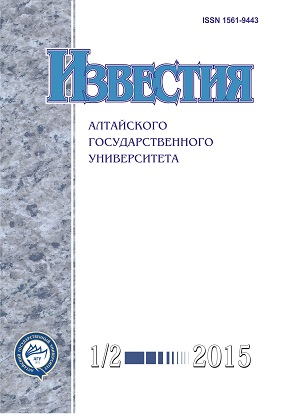Aluminum-Magnesium Alloy Strain Behavior under Thermomechanical Loading
DOI:
https://doi.org/10.14258/izvasu(2015)1.2-05Keywords:
monotonic deformation, jump deformation, isothermal loadingAbstract
Strain accumulation data for the AlMg6 alloy under isothermal loading are presented. The recorded realtime parameters of the experiment are the load and the strain. A sample has been loaded by a shear stress, and the shearing strain has been measured. Loading is performed isothermally within the temperature range from 25 °С to 500 °С. It is shown that macroscopic strain jumps provide the main contribution to strain accumulation at low temperatures. Along the monotone strain accumulation, the macroscopic strain jumps with their significant contribution to the overall deformation of the sample are observed. When the temperatures are 300 °С and higher, the strain accumulation behavior undergoes the following changes: the strain increments exponentially without clearly visible strain jumps. However, the strain increment allows this stage of strain accumulation to be treated as a quasi step-like stage. It is explained by the fact that due to increasing of the temperature of isothermal time monotone accumulation areas become smaller until they merge completely into single fast quasi step-like stage of accumulation.
DOI 10.14258/izvasu(2015)1.2-05
Downloads
References
Плотников В.А., Макаров С.В. Деформационные эффекты и акустическая эмиссия при высокотемпературной деформации алюминия // Письма в ЖТФ. - 2008. - Т. 34, № 6.
2
Плотников В.А., Макаров С.В., Потекаев А.И. Высокотемпературная пластическая деформация и акустическая эмиссия алюминия в слабоустойчивом состоянии // Известия вузов. Физика. -2013. - Т. 56, № 6.
3
Макаров С.В., Плотников В.А., Колубаев Е.А. Закономерности акустической эмиссии в условиях пластической деформации алюминиево-магниевого сплава при неизотермическом нагружении // Известия Алт. гос. ун-та. - 2014. - № 1/1. DOI:10.14258/izvasu(2014)1.1-56
4
Макаров С.В., Плотников В.А., Колубаев Е.А. Скачкообразная деформация и импульсная акустическая эмиссия при нагружении алюминиево-магниевых сплавов // Известия Алт. гос. ун-та. - 2014. - № 1/2. DOI:10.14258/izvasu(2014)1.2-36
5
Криштал М.М. Особенности образования полос деформации при прерывистой текучести // Физика металлов и металловедение. - 1993. - Т. 75, № 5.
6
Криштал М.М., Мерсон Д. Л. Взаимосвязь макролокализации деформации, прерывистой текучести и особенностей акустической эмиссии при деформировании алюминиево-магниевых сплавов // ФММ. - 1996. - Т. 81, № 1.
7
Криштал М.М., Мерсон Д. Л. Влияние геометрических параметров образца на механические свойства и акустическую эмиссию при прерывистой текучести в Al-Mg сплавах // ФММ. - 1991. - № 10.
Downloads
Issue
Section
License
Izvestiya of Altai State University is a golden publisher, as we allow self-archiving, but most importantly we are fully transparent about your rights.
Authors may present and discuss their findings ahead of publication: at biological or scientific conferences, on preprint servers, in public databases, and in blogs, wikis, tweets, and other informal communication channels.
Izvestiya of Altai State University allows authors to deposit manuscripts (currently under review or those for intended submission to Izvestiya of Altai State University) in non-commercial, pre-print servers such as ArXiv.
Authors who publish with this journal agree to the following terms:
- Authors retain copyright and grant the journal right of first publication with the work simultaneously licensed under a Creative Commons Attribution License (CC BY 4.0) that allows others to share the work with an acknowledgement of the work's authorship and initial publication in this journal.
- Authors are able to enter into separate, additional contractual arrangements for the non-exclusive distribution of the journal's published version of the work (e.g., post it to an institutional repository or publish it in a book), with an acknowledgement of its initial publication in this journal.
- Authors are permitted and encouraged to post their work online (e.g., in institutional repositories or on their website) prior to and during the submission process, as it can lead to productive exchanges, as well as earlier and greater citation of published work (See The Effect of Open Access).








